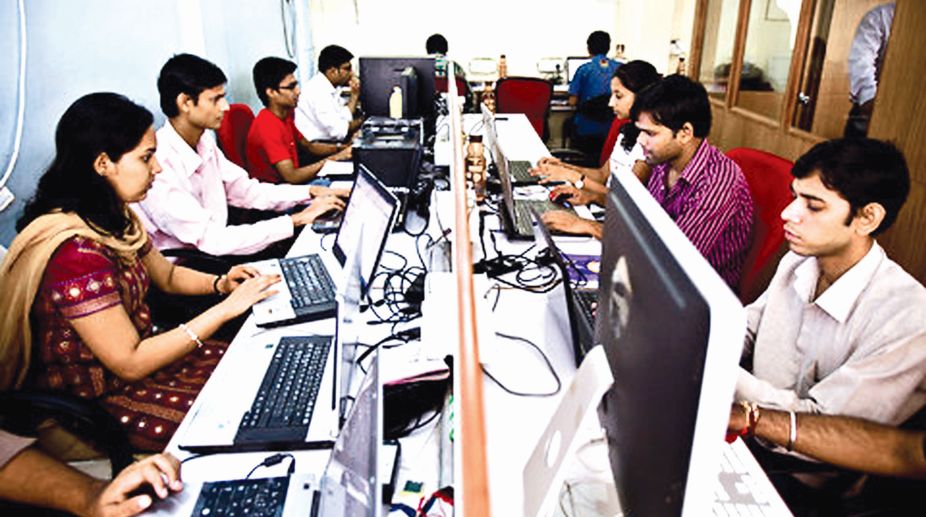B’desh violence: Protest in heart of city disrupts traffic
Chaos prevailed at the central business district in the city, which was in turmoil with traffic jams due to the Rani Rashmoni rally, organised by the Bangla Hindu Suraksha Samiti.
In any organisation, an employee’s decision to stay loyal and perform to their maximum potential is essentially an economic decision.

Representational Image.
Today’s dynamic marketplace calls for effective employee commitment practices for an organisation to achieve business success. Engaging and motivating employees to sustain optimum job satisfaction, promote good ethical judgment, and drive a result-oriented work culture, has become the focus of business and HR heads.
This calls for more than just a strong leadership team, appropriate work environment, and a standard rewards and recognition programme. What organisations need is a keen understanding of human behaviour and decision-making.
Advertisement
Behavioural economics explores complex human nature and provides valuable insights in developing effective rewards, recognition, engagement and retention programmes that evoke the desired change in people. Companies that apply behavioural economics principles are in fact said to outperform their peers by 85 per cent in sales growth and 25 per cent in gross margin, according to a study.
Advertisement
Irrational or what some consider emotionally driven behaviour is the key to influencing behaviour change. While conventional economic theory suggests that people will make rational decisions to suit their own interest, the reality is that humans are highly susceptible to Heuristics and Biases, as explained by behavioural economics.
In reality, people often base their decisions on rule of thumb, experience, shortcuts, and tricks of the trade, than undertaking a careful cost and benefit or data analysis to arrive at the best decision. This trait is universal and prevalent in even highly trained professionals like doctors, judges and accountants, while making complex decisions.
In any organisation, an employee’s decision to stay loyal and perform to their optimum potential is essentially an economic decision. In such a scenario, tangible rewards and cash may seem like they play a big role in motivating and engaging employees. However, these are merely extrinsic motivators and do not fully represent the bigger picture of human motivation. In their academic study, Shaffer and Arkes explain this as an example of “preference reversal”, where our brain is telling us we prefer one thing(cash) but we are actually motivated by something else (non-cash).
The lure of money alone is not enough to sufficiently motivate employees to put in their best at work. In fact, non-monetary rewards such as experiences – be it a vacation, movie tickets or spa treatments have emerged to be more effective in ensuring higher levels of productivity, compliance and retention.
This means, a personalised experiential reward is far more effective than a monetary reward as an engagement, motivation and rewards strategy. In an increasingly competitive job market where talent is highly sought-after, this can tip the balance in the favour of an organisation that motivates and engages employees with the right impactful propositions.
Another behavioural economics principle, “Loss Aversion”, shows that people are often motivated better by the threat of loss than by the promise of a reward. So, attaching a small penalty for opting out of a workplace fitness session might result in a significant increase in participation rather than offering an equivalent or even higher reward for participation.
According to behavioural economics professors Ran Kivetz and Itamar Simonson, a major element individuals factor in while choosing an incentive or loyalty programme is whether or not they identify an idiosyncratic fit. Idiosyncratic fit is the feeling that you enjoy a unique advantage in achieving a goal, making a sale, beating an opponent, or completing a task. Every time a salesperson on your team is offered a new incentive or opportunity, they ask themselves if the opportunity “fits” them.
Extending the same kind of individuality to other contexts helps, as seen with choice architecture. Choice architecture, as behavioural economist Richard Thaler explains, is “…organising the context in which people make decisions.”
An example of framing choices with your team is in performance reviews or incentive opportunities. For discipline, “one way or the other” works very well.
But how about when you are trying to motivate someone to get out of his or her comfort zone, set new goals and achieve breakthrough results? How do you overcome their cognitive biases and initiate action? A simple good-better-best scenario can provide the nudge they need. You provide the framework, and let them make the choice.
Other researchers have shown that a fast start leads to greater success, and knowing how well you’re doing along the way generates higher achievement; otherwise known as Goal Gradient Theory in behavioural economics. Statistics show that those who get off to a fast start in an incentive programme, typically finish 57 per cent higher than those who don’t. Ensuring that tracking progress is relevant to the size and scope of the goal is equally crucial.
In our experience, designing incentive programmes and setting goals using behavioural economics principles has given a positive boost to organisational results. By recognising and leveraging the fact that human decision-making is largely driven by emotional factors rather than rational, these principles can be instrumental in improving employee productivity, performance, morale, and retention.
The writer is managing director, BI WORLDWIDE India
Advertisement